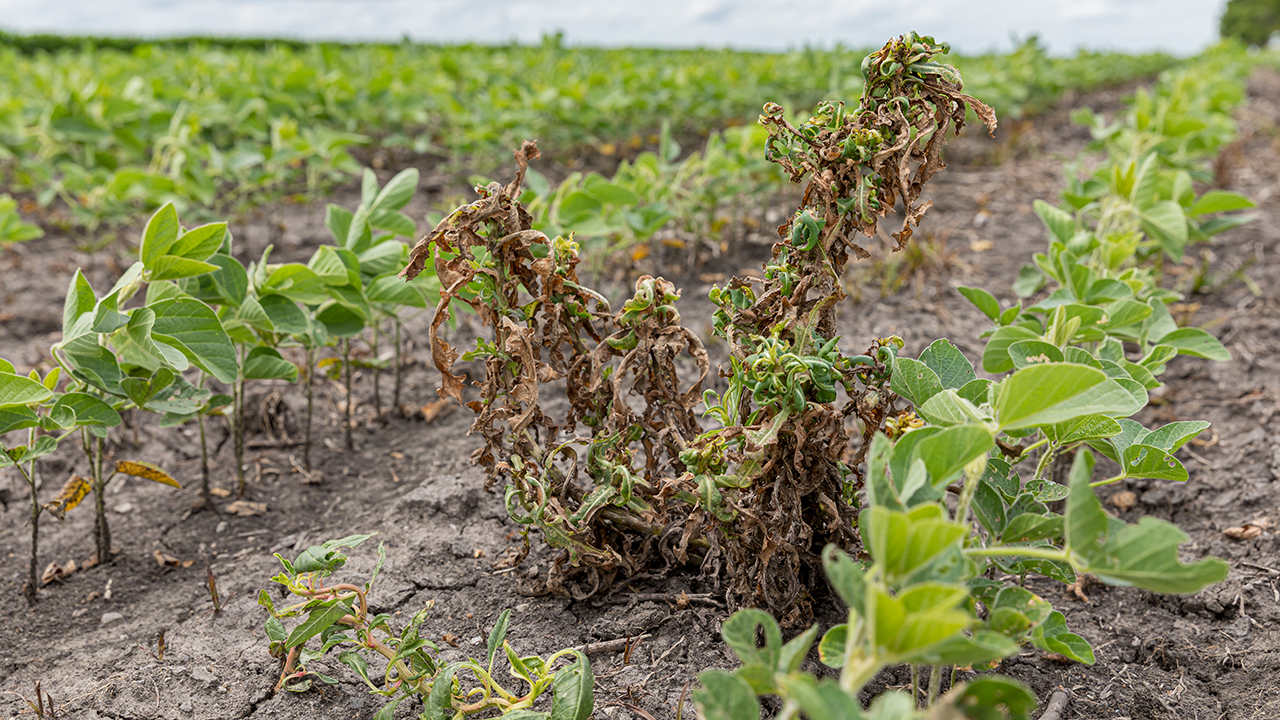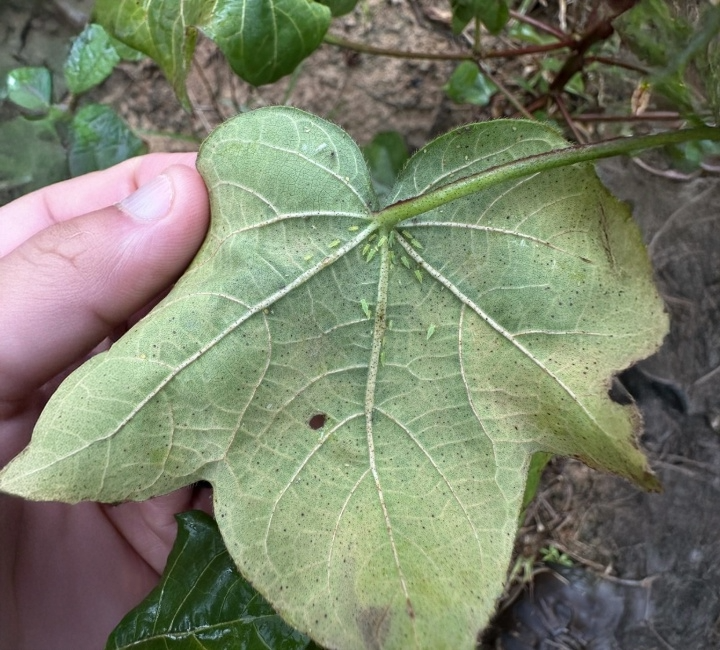Auburn researchers help farmers adapt to EPA changes
This year, major regulatory changes enacted by the Environmental Protection Agency (EPA) will affect farmers nationwide, specifically herbicide use for soybean and cotton producers. For 2025, dicamba herbicide products such as XtendiMax, Engenia and Tavium for over-the-top applications on soybeans and cotton will not be legal for use this growing season.
Auburn University researchers and Alabama Cooperative Extension System specialists are working to provide Alabama row crop growers with guidance on how to navigate and best manage production without dicamba.
“Due to regulatory restrictions from the EPA and FIFRA (Federal Insecticide, Fungicide and Rodenticide Act), which enforces herbicide labeling laws, the label for dicamba is no longer an option, so we are doing research to assist our growers,” said David Russell, an assistant Alabama Extension professor of weed science in the Auburn College of Agriculture.
Dicamba is a systemic herbicide that impacts the vascular system of a plant, speeding up its growth rate and controlling it. This herbicide is used to kill broadleaf weeds in row crops, weeds in turf and even some woody plants like brush in pastures. Dicamba is particularly beneficial on weeds that have developed Roundup resistance, such as Palmer amaranth, commonly known as pigweed. Farmers are looking for sufficient substitutes this growing season to protect their soybean and cotton crops from invasive weeds.
“With the changes, there will be many generic products applied like Liberty and glufosinate,” said Steve Li, associate professor and Alabama Extension specialist with the Department of Crop, Soil & Environmental Sciences.
“Glufosinate is not as easy to spray as dicamba to achieve the same efficacy, but the drift issues are not as bad. I recommend to our Alabama farmers to make sure to spray under the right conditions during full sunlight, not too early or too late in the day. Using sufficient volume of 15 gallons per acre and selecting the right adjuvant, particularly ammonium sulfate, are methods that have shown positive results,” Li explained.
Russell has continued ongoing research to provide Alabama producers with instruction and alternative options while navigating this changing legislation.
“While there are still viable management options other than dicamba, our main emphasis this year is being timely with pest management strategies. Choosing the right herbicide for the target pest will help achieve the best return on investment,” Russell said.
Extensive research is being conducted at the Alabama Agricultural Experiment Station’s outlying units. Russell is overseeing multiple trials testing alternative available herbicides that are still labeled for legal use on Roundup-ready soybeans and cotton.
“The research we are conducting is trying to put the dollars and cents into treatments that are viable alternatives,” said Russell. “We need to see return on investment and how to make best money practices, so we can provide our growers with treatment options that work well but are also cost-effective.”
Testing trials at the experiment research stations have shown success in some of the alternative herbicides for weed control for soybeans. Herbicides like Flexstar GT, Reflex, Storm, Python, Ultra Blazer and others are currently tested in variety trials. Controlling the spread of pigweed (Palmer Amaranth), morning glory (Convolvulus arvensis), and coffee senna (Senna occidentalis) is crucial to maintaining yields and supporting harvest efficiency.
The results of the research trials conducted also indicate that cultural practices have several beneficial effects, as farmers cannot utilize dicamba for weed control. Crop rotation, incorporating winter cover crops and row orientation can reduce the reliance on herbicides to control weeds and pests and improve farm biodiversity and sustainability.
Li says he is hopeful that comparable products with new labels will be available at some point in the future. “We might see dicamba make a comeback in future, but I feel that it will look a lot different. It’s likely to have heightened restrictions as the ESA (Endangered Species Act) is reviewed. We will keep our growers up to date as new products come out,” said Li.
Russell, Li and other researchers will continue conducting in-field research to provide growers with the tools and practical knowledge to navigate these new regulatory challenges.





